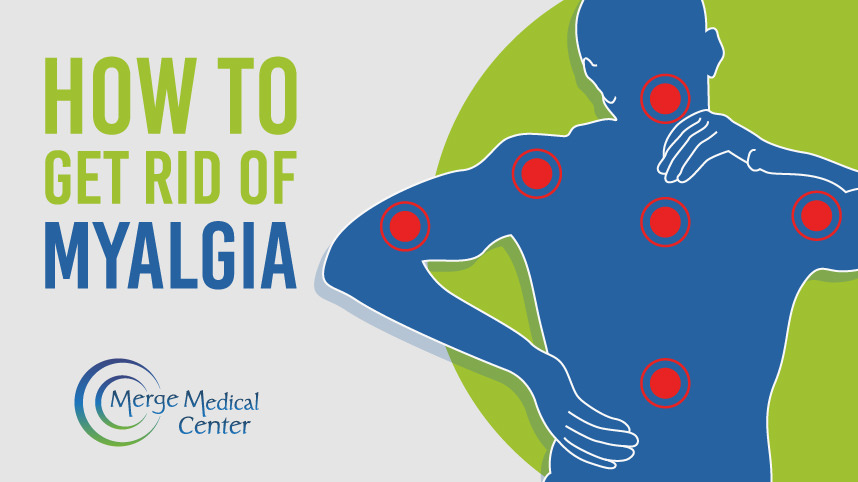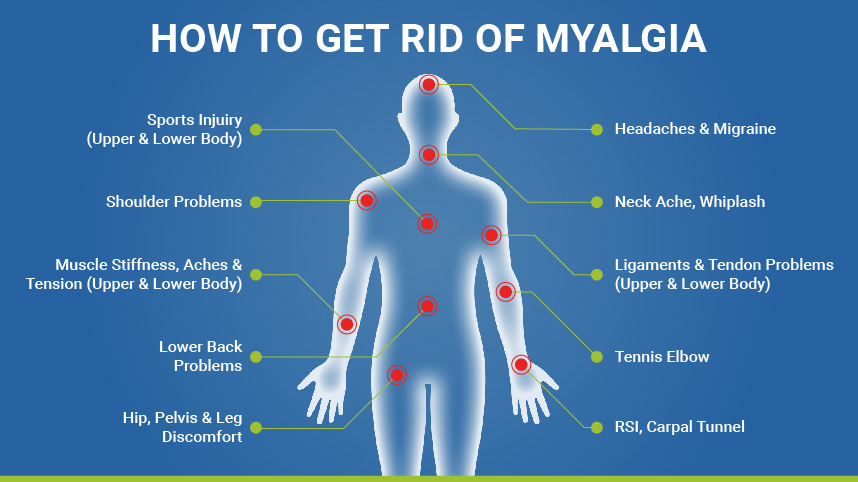
Muscle pain is common and can come in any muscle of the body. The medical term for muscle pain is Myalgia. Myalgia is muscle pains, aches, and pain associated with ligaments, tendons, and muscles. Let’s learn more about Myalgia and how to get rid of Myalgia.
What is Myalgia?
Do you suffer from Myalgia? If so, you’re not alone. Myalgia is a condition that affects millions of people all around the world. Unfortunately, there is no cure for Myalgia, but there are pain management treatments that can help make the symptoms more manageable. In this blog article, we will discuss what Myalgia is, the symptom of Myalgia, and how to get rid of Myalgia using both traditional and alternative treatments. We hope this information will help you manage your Myalgia and live a happier, healthier life!

What Are The Common Symptoms Of Myalgia?
If you are experiencing muscle pain, stiffness, or soreness, you may have Myalgia. Myalgia is a condition that causes widespread muscle pain, stiffness, and tenderness—caused by several things, including infection, injury, autoimmune diseases, and exposure to toxins. It is very debilitating and significantly reduces your quality of life. Below are the most common symptoms of Myalgia
- Fatigue (quickly getting tired doing daily routines)
- Joint pain
- Severe (or mild) pain that lasts for long periods or it’s constant.
- Depression due to constant pain
- Chills and fever if having an infection
What are the Risk Factors for Myalgia?
The significant risk factors for Myalgia related to persons with chronic liver disease, or receipt of a liver transplant, elevated bilirubin level at baseline, and major surgery.
Risk factors for Myalgia include:
- Sex – Myalgia is diagnosed more often in women than in men.
- Family history – You may be more likely to develop Myalgia if a parent or sibling also has the condition.
- Lupus or Rheumatoid Arthritis – Having lupus or rheumatoid arthritis (RA), you are more likely to develop fibromyalgia.
Matter of fact, the varying causes of your pain depend on many things.
How to Diagnose and Treat Myalgia?
Doctors can diagnose Myalgia with the patient’s history, X-rays, physical examination, and blood tests. To improve the condition of muscle pain from overuse or injury, resting the body is needed. Taking anti-inflammatory herbs e.g Turmeric or Boswellia are also a great help in relieving a patient’s pain. The following activity is the primary way to treat muscle pain naturally.
- Rest – Take a break from your routine activities as much as possible but do not keep the affected body part immobile as you will want to continue at least range of motion exercises.
- Ice or heat– Can choose one or the other based on which your body responds or alternate between both of them.
- Compression – A compression bandage is needed to reduce swelling in the part of the body when swelling is severe or may want to use a light wrap to provide warmth and increase blood flow to the area depending on the injury timing and severity.
- Elevate – While taking a break from your regular activity, elevate the affected area to reduce severe swelling.
When should you see a doctor?
See a doctor when you experience pain that continues while taking a break or if there are any signs of infections around the affected body parts. If you have trouble breathing and suffering from a high fever, seek immediate attention.


